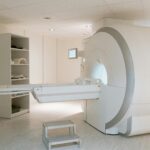Effective communication is a fundamental component of providing exceptional healthcare. In recent years, the AIDET framework has gained popularity as a powerful tool for improving patient experiences and outcomes. In this blog, we will explore what AIDET stands for and why it is vital for advanced practitioners and physicians in delivering high-quality care.
What is AIDET
AIDET is an acronym that stands for Acknowledge, Introduce, Duration, Explanation, and Thank you. It is a communication framework developed to enhance interactions between healthcare providers and patients, creating a positive and compassionate environment during their healthcare journey.
Acknowledge
The first step in AIDET is acknowledging the patient. This involves making eye contact, greeting the patient warmly, and using their preferred name. By acknowledging the patient, advanced practitioners and physicians convey respect and establish a foundation of trust, demonstrating that the patient is valued as an individual.
Introduce
The introduction phase is about introducing oneself and clearly stating one’s role in the healthcare team. This helps eliminate ambiguity, ensuring that patients understand who they are interacting with and the expertise they bring to their care. Introducing oneself also promotes transparency, allowing patients to feel more comfortable and confident in sharing their concerns and asking questions.
Duration
Providing an estimated duration for the interaction or procedure is an important aspect of setting patient expectations. Letting patients know how long an examination or consultation might take helps manage their time and reduce anxiety. This step reflects respect for the patient’s schedule and eases any apprehension they may have about their healthcare encounter.
Explanation
The explanation phase focuses on clearly communicating the purpose, process, and expected outcomes of a particular procedure or treatment plan. Advanced practitioners and physicians should explain medical terminology in simple language, encourage questions from patients, and ensure that they understand the information being presented. By providing comprehensive explanations, healthcare providers empower patients to actively participate in their own care decisions.
Thank you
The final step in AIDET involves expressing gratitude to the patient for choosing the healthcare facility and for entrusting their care to the advanced practitioner or physician. This simple act of gratitude can have a profound impact on the patient’s experience, instilling a sense of appreciation and fostering a positive rapport.
Importance of AIDET for Advanced Practitioners and Physicians
AIDET helps healthcare providers prioritize the patient’s needs and preferences, creating a patient-centered approach to care. By acknowledging, introducing, and engaging in open communication, advanced practitioners and physicians establish trust, allowing for more collaborative decision-making and improved patient satisfaction. When patients feel acknowledged and receive clear explanations, their anxiety and uncertainty are reduced, leading to improved patient outcomes and overall satisfaction. Effective communication through the AIDET framework also enhances patient compliance and engagement in their healthcare journey, meaning that advanced practitioners and physicians can improve treatment adherence, leading to better health outcomes.
This process contributes to a positive patient experience by fostering a compassionate and respectful environment. By creating a welcoming and supportive atmosphere, healthcare providers become known for their empathy and patient-centered approach, which helps with attracting and retaining patients.
Examples of AIDET in Practice
AIDET can be used in any medical conversation. Read below to see two quick examples of how the same skills can apply to very different situations.
Routine Office Visit
A patient coming in for a routine office visit will likely experience AIDET in a way that feels a bit easier to maintain as a casual conversation.
- Acknowledge: The practitioner will greet the patient by name, make eye contact, and smile.
- Introduce: They should then introduce themselves and their role in the patient’s care beyond their title. It is important to leave space here for patients to respond with their own expectations and concerns, as that could affect the estimated duration of the visit based on what the provider expects to do.
- Duration: Once you have a clear idea of what is expected from this visit, explain your understanding of what needs to happen this visit based on the information provided.
- Explain: Explain how you will go about attaining the set expectation. Confirm with your patient to ensure that you are both understanding the situation and that there is no miscommunication before moving forward.
- Thank You: Once you are ready to start putting your plans into motion, thank the patient for their time and for trusting you with their care.
A Difficult Conversation
A patient coming in for a difficult conversation about a diagnosis will likely experience AIDET as a serious, formal, and potentially long discussion.
- Acknowledge: Start by greeting the patient by name, making eye contact, and giving them a supportive or reassuring smile.
- Introduce: Introduce yourself and your role in their care. Take the time to get to know the patient and their concerns. Ask the patient about their understanding of their diagnosis and their feelings about it.
- Duration: Let the patient know that you have time to talk to them and that you are there to support them, giving them the space to be honest and open with their fears and questions.
- Explain: Answering questions and explaining the patient’s diagnosis in a clear and concise manner will likely happen simultaneously. While honesty and clarity are incredibly important in this stage, practitioners should be sure to express compassion and understanding when responding to questions.
- Thank You: Follow up this discussion by thanking the patient for their trust and for allowing you to share this difficult news with them.
AIDET is a valuable communication framework that can positively transform the healthcare experience for patients. By following the steps of AIDET and incorporating its principles into their practice, advanced practitioners and physicians can set themselves up for success in nearly any patient interaction.
If you are looking for a new opportunity to show off your AIDET skills, then check out our job board here. If you are looking for something different than what we have open, then send us an updated resume here and connect with a recruiter today to talk about other opportunities.











